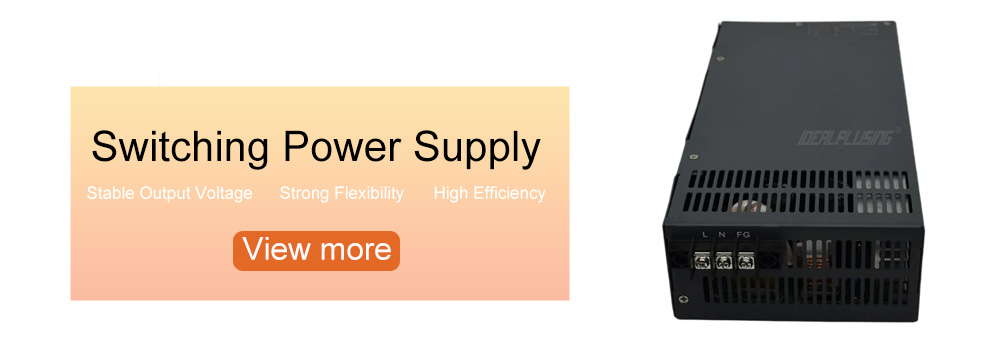At present, there are many kinds of power modules on the market. The input voltage, output power, function and topology of different power products are different. Their characteristics are to power microcontrollers, integrated circuits, digital signal processors, analog circuits, and other digital or analog loads. The reliability of power modules is relatively high, but failures may also occur. The following analyzes several common power failures.

1. Low output voltage
If the output voltage of the power supply is too low, the subsequent circuit will not work properly. For example, in a microcontroller system, a sudden increase in load will lower the supply voltage of the microcontroller, causing the microcontroller to reset, which will bring a devastating blow to the entire system-level circuit, and will cause a chain reaction of one wrong move and the whole thing will be destroyed. What are the reasons for the low output voltage?
The output stage is connected to multiple loads in parallel. After normal operation, a load requires a large transient current, causing the voltage to be pulled down instantly, thereby affecting other parallel loads;
The output line is too long or too thin, resulting in excessive line loss, which in turn generates a considerable voltage drop between the lines, ultimately causing the output voltage of the power module to be low when it reaches the two ends of the actual load;The voltage drop of the anti-reverse diode is too large. Generally, the forward voltage drop of the diode is between 0.2 and 0.6V. If the power module outputs a 5V voltage, the voltage drop generated by the high conduction voltage drop diode will cause the voltage of the subsequent circuit to be low, thus failing to work normally;
The input filter inductance in the module peripheral circuit is too large, resulting in a larger internal resistance and an enhanced current throttling effect. When the subsequent load suddenly becomes heavier, the current cannot be supplied, resulting in a low voltage at both ends of the load.
Solution:
(1) Connect a large capacitor at the output end or use a higher power input power supply;
(2) Adjust the wiring, increase the wire cross-sectional area or shorten the wire length, and reduce the internal resistance. If the power module has a Trim function adjustment, the output voltage can be increased to offset the voltage drop caused by line loss;
(3) Replace with a diode with a small conduction voltage drop;
(4) Reduce the filter inductance value and reduce the internal resistance of the inductor.
2. High input voltage
Due to the insufficient voltage margin design of the electronic components inside some power modules, when the input voltage is too high, the module will be damaged or even burned. In this case, we need to do some protection on the periphery. What are the common reasons that easily cause the input voltage to be high?
When hot-plugging and powering on the input of the power module, the voltage spike and surge current are both high, and the module with voltage difference resistance will be instantly broken down and damaged;
The load at the output end is too light, lighter than 10% of the rated load. For some nonlinear voltage-stabilized power products, the module may not necessarily be damaged, but it will affect some performance of the subsequent stage, such as low efficiency and module overheating;
The voltage impact of the front-stage power supply causes the input voltage to be high or generates interference voltage, and electromagnetic compatibility is also more likely to cause high input voltage, such as lightning surge and group pulse
Solution:
(1) Ensure that the output end is not less than 10% of the rated load. If there is often no-load phenomenon in the actual circuit work, connect a dummy load of 10% of the rated power to the output end;
(2) Replace an input voltage source with a reasonable and stable range. When there is interference voltage, consider connecting a TVS tube or a voltage regulator tube to the input end, and you can also add an EMC peripheral circuit.
3. Large output noise
Noise is a key indicator to measure the quality of power modules. In the application circuit, the design layout of the components around the module will also affect the output noise. What factors have a greater impact on the output noise?
The distance between the power module and the noise-sensitive components of the main circuit is too close;
The power input terminal of the noise-sensitive components of the main circuit is not connected to the decoupling capacitor;
Differential frequency interference occurs between the power modules of each single-channel output in the multi-channel system;
The ground wire treatment is unreasonable;The noise at the input end of the power module is too large and is not processed, and is directly coupled to the output end of the power module;
Solution:
(1) Keep the power module as far away from the noise-sensitive components of the main circuit as possible or isolate the module from the noise-sensitive components of the main circuit;
(2) Connect a 0.1μF decoupling capacitor to the power input terminal of the noise-sensitive components of the main circuit (such as: A/D, D/A or MCU, etc.);
(3) Use a multi-channel output power module instead of multiple single-channel output modules to eliminate differential frequency interference;
(4) Use remote point grounding to reduce the ground loop area.







